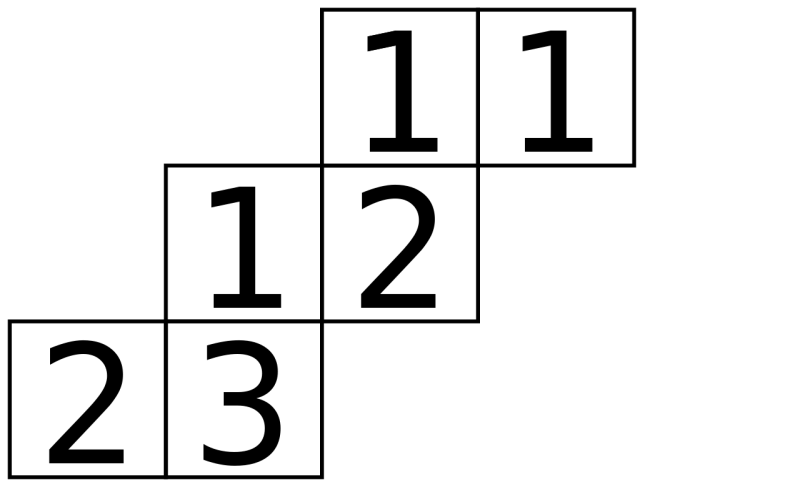Fundamental Principles of Counting | Mathematics (Maths) Class 11 - Commerce PDF Download
Fundamental Principles of Counting

I. The Addition Rule
Let us have two events, namely A and B. The number of ways in which event A can occur/ the number of possible outcomes of event A is n(A) and similarly, for the event B, it is n(B). Also, the events A and B are mutually exclusive events i.e. they have no outcome common to each other.
Let E be an event describing the situation in which either event A occurs, OR event B occurs. Then, the number of ways in which the event E can occur or the number of possible outcomes of the event E is given by:
n(E) = n(A) + n(B)
This is known as the Addition Rule of Counting. Let’s clarify our concepts with a suitable example.
Question: Jacob goes to a shop to buy some ping pong balls. He wishes to choose one ball from the amateur section, which had a total of five balls; or one ball from the professional section, which had a total of three balls. How many ways are possible in which he can buy a ball i.e. he can buy one ball from the amateur section OR one ball from the professional section?
Solution: n(Jacob buying a ball) = n(Jacob buys one ball from the amateur section) + n(Jacob buys one ball from the professional section)
n(Jacob buying a ball) = 5C1 + 3C1
= 5 + 3 = 8
Thus there are 8 possible ways in which Jacob can buy a ball from the store, according to his specific wishes.
II. The Product Rule
In similarity to the events defined as in the Addition Rule, let us have two events namely A and B; such that both are mutually independent of each other i.e. one event’s outcome does not affect the other event’s outcome. (We’ll show this physically through our solved example)
Let E be an event describing the situation in which either event A occurs, AND event B occur i.e. both event A and event B must occur (note the difference from the previously mentioned case). Then, the number of ways in which the event E can occur or the number of possible outcomes of the event E is given by:
n(E) = n(A)×n(B)
This is The Multiplication Rule of Counting or The Fundamental Counting Principle. Let’s try and understand it with an example.
Question: Jacob goes to a sports shop to buy a ping pong ball and a tennis ball. There is a total of five ping pong balls and 3 tennis balls available in the shop. In how many ways can Jacob buy a ping pong ball and a tennis ball?
Solution: Clearly; the phenomenon of Jacob buying a ping pong ball is independent of the phenomenon of Jacob buying a tennis ball. Both are completely separate events!
n(Jacob buying one tennis ball and a ping-pong ball) = n(Jacob buys a ping pong ball) × n(Jacob buys a tennis ball)
n(Jacob buys both one tennis ball and a ping-pong ball) = 5C1 × 3C1 = 5 × 3 = 15
Thus there are 15 different ways in which Jacob can buy a ping pong ball and a tennis ball from the sports shop.
Generalisation of the Addition and the Product Rule
In general, if there are several mutually exclusive events P1, P2, P3, P4……Pn …etc. with the respective number of ways given as n (P1), n(P2), n(P3), n(P4)….n(Pn), then the number of ways in which either P1 and P2 and ….. … Pn can occur is given by,
n(E) = n(P1) + n(P2) …….. + n(Pn)
Similarly, if there are several mutually independent events P1, P2, P3, P4……Pn…etc.
with the respective number of ways given as n (P1), n(P2), n(P3), n(P4)….n(Pn) , then the number of ways in which P1 and P2 and ….. … Pn can occur is given by,
n(E) = n(P1) × n(P2) …….. × n(Pn)
We must note that all the possible number of ways derived thus, all of them will represent the unique and distinct ways in which the event E will take place.
Event and Its Trials
Suppose we have an event E with ‘m’ possible outcomes. If we conduct this event n number of times, then the number of outcomes of ‘n trials of the event’ will be, mn
Clearly, this is only valid when all the outcomes of the experiment/event E are independent of each other. This would ensure that everytime the event takes place, any of its outcomes are possible.
Solved Example
Question: A coin is tossed 50 times. What is the number of possible outcomes of this experiment?
Solution: A coin toss has two possible outcomes: ‘A heads’ or ‘A tails’. Every toss of the coin is independent of every other toss of the coin, since whenever you toss the coin; there would be two possible outcomes with equal probability. Thus, the no. of possible outcomes of the experiment = 250
|
74 videos|239 docs|91 tests
|
FAQs on Fundamental Principles of Counting - Mathematics (Maths) Class 11 - Commerce
| 1. What are the fundamental principles of counting? |  |
| 2. How does the multiplication principle work in counting? |  |
| 3. What is the addition principle in counting? |  |
| 4. How is the principle of complementary counting applied? |  |
| 5. Can the fundamental principles of counting be applied to real-life situations? |  |






















